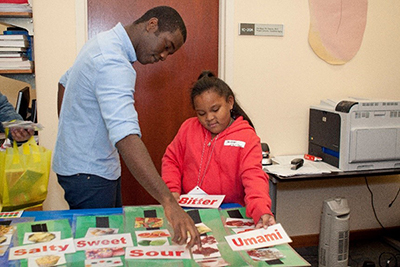
AUTISM RESEARCH IS A FAMILY AFFAIR: STEPS TOWARD INCREASING INCLUSION AND DIVERSITY
11/28/2022

|
AUCD's network of Intellectual and Developmental Disability Research Centers (IDDRCs) consists of 16 Centers. Fifteen Centers currently receive funding from the Eunice Kennedy Shriver National Institute for Child Health and Human Development (NICHD). IDDRCs contribute to the development and implementation of evidence-based practices by evaluating the effectiveness of biological, biochemical, and behavioral interventions; developing assistive technologies; and advancing prenatal diagnosis and newborn screening.
As a research team working with children and adolescents with autism in the Bronx, a racially, ethnically and culturally diverse borough of New York City, we have seen the significant barriers to research participation that families in our area face. Research is an essential step toward improving outcomes of individuals with autism. When research involves children, parents and caregivers make major contributions to the study process by enrolling their children in research, carving out time to bring their children to the research setting, and providing important information about the child’s strengths, needs, and developmental and intervention histories. Unfortunately, the racial and ethnic diversity of the US population is not well-represented in many research studies and research findings often do not generalize to excluded groups. This lack of representation in research contributes to health disparities.
Our hands-on experience makes clear that, for study samples to be more representative of the general population, it is necessary to remove barriers to participation. We need to consider each family’s unique circumstances and needs in the research process. Barriers are numerous and can include: costs associated with participation such as food, transportation, and need for childcare for the siblings of a participant; accessibility issues; rigid work schedules and potential loss of income to bring their child to the study site; different language/dialects; and different socio-cultural values between families and research team members.
The National Academies of Sciences, Engineering and Medicine recently published a consensus study report “Improving Representation in Clinical Trials and Research: Building research equity for women and underrepresented groups (2022)” in which recommendations for improving representation in clinical research are presented. They stress the need to consider an individual or families’ unique circumstances and to be as flexible as possible in the research process, and point out that “changing our nation’s approach to clinical research may require significant upfront costs to more equitably recruit and retain a diverse group of participants ….” (1).
In our lab, we consciously take steps to accommodate each family’s needs. In screening and scheduling a family, we work with their schedules and availabilities. We send friendly reminders when their appointments are approaching. We have just one person interacting with a given family to gather information so that a relationship of trust can develop. On a visit to the laboratory, we offer tea/coffee/water and snacks throughout the visit, and we provide a deli lunch to all attending family members. We welcome questions and feedback and we provide a box for anonymous comments. Our written research reports of clinical and cognitive test findings include recommendations and local resources appropriate to the family’s needs.
We believe that in providing the family with as much support as possible within the confines of a research context and budget and being sensitive to and respectful of each individual’s values, we create a friendly and inviting atmosphere for the family that leads to a good experience, repeat visits, and new referrals to the study.
Counter to the common belief that distrust of the research process accounts for certain groups’ reduced representation, excluded groups are no less willing to participate in research if they are asked (1). Yet, despite an over 30 year effort to enact change at the federal/institutional level, underrepresentation remains a major issue. If health equity is a genuine societal goal, then the toolbox needs expanding. Targeted administrative supplements by funding agencies (as exist to support underrepresented research trainees) could be particularly effective in removing barriers to participation in clinical research. Human clinical research is an expensive endeavor, and budgets are generally capped[1]. Adminstrative supplements by federal and foundation research funding entities could address barriers to participation for populations such as ours in the Bronx by supporting costs such as translation services, babysitting, compensation for loss of work, and car service to and from the study site.
In 2022 we are at a point where remarkable scientific and technological advances are being made; there are previously unimagined opportunities for translational research to make a difference in the lives of individuals and their families. It is imperative that we work to ensure that groups are not excluded from the research process, so that findings are relevant.

References
- National Academies of Sciences, Engineering, and Medicine. 2022. Improving Representation in Clinical Trials and Research: Building Research Equity for Women and Underrepresented Groups. Washington, DC: The National Academies Press. https://doi.org/10.17226/26479.
[1] Either explicitly, or implicitly in that high pricetags may cause grant reviewers to elevate standards for scientific merit because the project uses a disproportionate amount of the funding budget total.